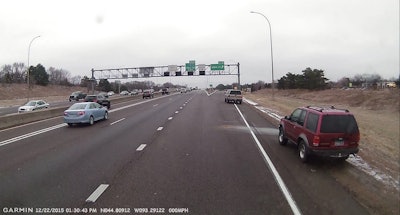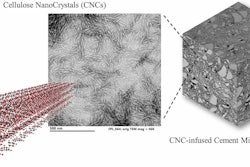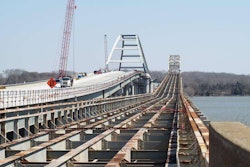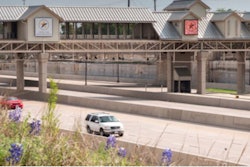 Two intrusions to the right show vehicles that had entered a work zone in Minnesota. The images were from video that researchers used for testing the documentation process of intrusions. Photo: MnDOT
Two intrusions to the right show vehicles that had entered a work zone in Minnesota. The images were from video that researchers used for testing the documentation process of intrusions. Photo: MnDOTResearch has shown that half of the deaths of roadway work-zone workers are caused by vehicles intruding into the zone. Addressing the nature of these intrusions is an important step for ensuring a safe work environment for crews.
But few states have had an explicit method for systematically collecting this work-zone intrusion data. That’s why Nichole Morris of the University of Minnesota and Todd Haglin of the Minnesota Department of Transportation have led a safety-based project to complete the Work Zone Intrusion Report Interface Design. It’s an efficient, comprehensive and user-friendly reporting system for intrusions in work zones.
“This work is critical to improving the safety of work zones by taking a data-driven approach to mitigate the contributing factors of intrusions,” explains Morris, the project’s principal investigator. She’s a research scholar for the University’s Center for Transportation Studies and director of the University’s HumanFIRST Laboratory in the Department of Mechanical Engineering, as well as an adjunct professor.
 Nichole Morris, University of Minnesota Center for Transportation Studies
Nichole Morris, University of Minnesota Center for Transportation Studies“Collecting this data places the burden on maintenance workers, so we must consider their needs, wants and priorities,” Morris says.
“Above all, the research highlighted the importance of creating a feedback cycle between management and workers to ensure that trust in maintained and workers can see the measurable impacts of their labor in providing data regarding work zone intrusions.”
The process for collecting the data includes documentation of intrusions not deemed a threat to worker safety and also detailed reports for more thorough documentation of serious intrusion events.
Through the creation of an organizational structure and plan regarding the received work zone intrusion data, MnDOT has been working to design this plan around the data, propose policy at the state level, consider current work practices, and communicate to work zone crews how their reporting is having a real impact, the report says.
Final recommendations include organizational changes and support to encourage workers to complete the form and provide valuable data to the state.
The report says, in part:
“Reporting work zone intrusions, especially minor ones, is seen as a low priority by many supervisors and workers, as ‘just another report for the pencil-pushers that doesn’t change anything’.
“Given that they consider reporting minor intrusions as low priority, if MnDOT wants reliable and consistent intrusion reporting, an effort to engage work zone supervisors and crew members in the benefits, consequences, and decision-making process is essential to the success of the intrusion reporting system.”
The report says that communication should be widespread and consistent regarding the current and recent data on intrusions, the data trends, and what changes are being made as a result of the intrusion reporting.
Given this, the researchers say, the office or team responsible for managing the intrusion reporting data should have at least three areas of focus with a different team member handling each area:
- Intrusion data and how it should impact state and local government policy
- Intrusion data and how it should influence MnDOT policy on work zone use and design
- Supervisor and crew member coordination and outreach.













